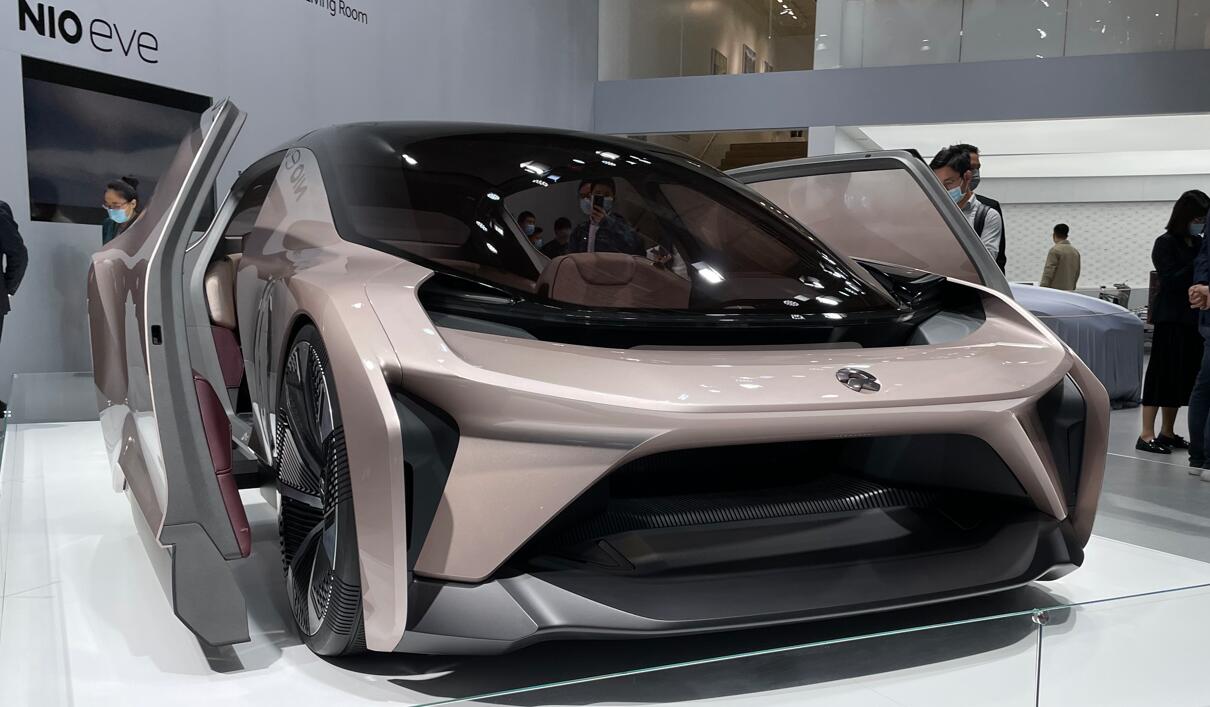Nio reportedly working on ultra-luxury sedan to take on Mercedes-Maybach S-Class
Nio's ultra-luxury sedan project is already in the design phase and is set to be launched as early as 2024 and sold globally, according to local media.

(Nio EVE concept car. Image credit: CnEVPost)
Nio (NYSE: NIO) has talked a lot about launching new sub-brands for the mass market, and the latest information suggests that the local Chinese premium brand also plans to expand into higher-priced markets.
Nio is going to create its own "Mercedes-Maybach" model, local automotive media Auto Home reported today, citing an insider close to the project at the electric vehicle (EV) maker.
The project is already in the design phase, and the model will be a luxury sedan priced at the RMB 1 million ($144,000) level, the source said.
The luxury sedan will be operated under the Nio brand, not a sub-brand, and will compete with the Mercedes-Benz Maybach S-Class, the person said.
If things go well, the model will be launched as early as 2024 and sold globally, the person added.
This is the first time we've seen rumors that Nio will enter the ultra-luxury market.
The company's most expensive model currently in delivery is the ES8 SUV, which starts at RMB 598,000 for its most expensive version.
Nio's flagship sedan, the ET7, is currently offered in two versions, with starting prices of RMB 458,000 and RMB 536,000 before subsidies, respectively.
The average price of mainstream premium car brands in the Chinese market in October was RMB 385,100 and for Nio RMB 466,000, said Qin Lihong, co-founder and president of the company, in a media communication on December 12.
In China's high-end electric vehicle market with selling prices above RMB 400,000, Nio had a market share of 77.6 percent in November, Qin said.

It is worth noting that Nio does not yet have a model to cover the higher-priced market.
The local car company currently focusing on the ultra-high-end market is Human Horizons' HiPhi brand, which launched the HiPhi X SUV in October 2020 with a starting price of RMB 570,000 for the six-seat version and up to RMB 800,000 for the four-seat version.
In August, HiPhi officially launched its second model, the HiPhi Z, which is available in five-seat and four-seat versions with starting prices of RMB 610,000 and 630,000 respectively.
More than 60 percent of HiPhi X customers are Nio owners, Auto Home said in the report today, citing a HiPhi sales source.
Since that market exists, building an ultra-luxury model can be done by Nio itself, the report said.
A previous focus of attention on Nio's model plans has been its mass-market-oriented sub-brands.
On August 12, 2021, William Li, Nio's founder, chairman and CEO, said in a conference call that the company would enter the mass market with a new brand and had already established a core team.
In subsequent external communications, Nio management, including Li, confirmed that the sub-brand's project code name is ALPS.
Nio plans to start delivering mass-market models in the second half of 2024, with prices in the RMB 200,000 to 300,000 range, Li said in another conference call after announcing its first-quarter earnings this year.
The sub-brand's model will be based on the NT 3.0 platform and carry Nio's own batteries, he said, adding that it will also support battery swap and high-voltage fast charging.
In August, there were rumors that Nio was also building a third brand with the project code name Firefly, which began preparations around the same time as ALPS.
On November 28, local media LatePost reported that Nio now has four new businesses, codenamed NB 1-4, with NB referring to New Business.
B1 is the Nio sub-brand codenamed ALPS, with a model price range of RMB 200,000-300,000. B2 is the chip business, B3 is a lower-end car brand codenamed Firefly, and B4 is the cell phone business, according to LatePost.
In its report today, Auto Home cited sources familiar with the matter as saying that the Firefly project will operate independently like Nio and ALPS, but the difference is that it will avoid the fierce competition in the Chinese market and focus primarily on the European market.

